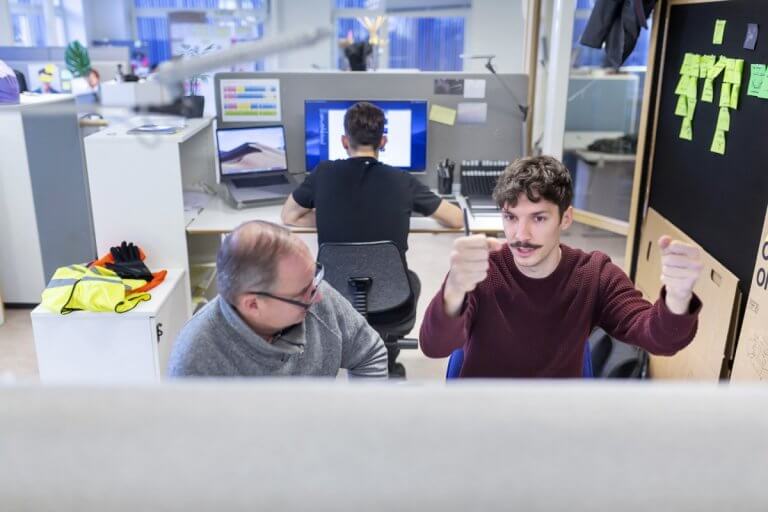
Design matters. Good design is not exclusive to museums, private collections or fashion shows. Instead, it’s an ideal every good society should aim for.
Products as elementary as toasters to sophisticated items like iPhones must transcend beyond being merely functional, encouraging us to be the best versions of ourselves. We want a seamless process when interacting with products and services; one that flows in harmony with us and our community.
The rapid expansion of technology adds another layer of opportunity and challenge to the world of design. Which services aren’t affected by the infiltration of social media? Advanced production technologies, like 3-D printing, are forcing businesses to rethink how they make products. Once they come into existence, self-driving cars and electric-powered buses will necessitate massive changes to how our roads and entire transit systems are designed.

Most of the world are yet to catch up with these changes, but Europe has. IKEA, the ubiquitous furniture company, is developing an app called Place, which makes use of augmented reality to allow users to drop virtual furniture into their own living room.
The Netherlands has set up various testing facilities for self-driving vehicles, such as the Road Transport Agency (RDW) test track, an innovation centre and cameras for monitoring driving behaviour. The future of music is being led by Spotify, from its headquarters in Stockholm, with its smart mixture of design, technology and data to thrive in the information age.
Central to this European domination of design are its young crop of innovators and thinkers who graduated from the continent’s many universities. At these design schools, talent is nurtured and fed into opportunities that enable them to flourish:
UMEÅ INSTITUTE OF DESIGN (UID), UMEÅ UNIVERSITY – SWEDEN
In a country blessed with widespread ingenuity, the Umeå Institute of Design remains one of the most respected and influential design schools on the world stage. UID placed at the top of the two leading global rankings on design education in 2018, Red Dot and iF – a direct reflection of the quality of projects produced by UID students.
The well-regarded school offers three internationally-oriented and specialised two-year programmes leading to Master of Fine Arts degrees: Advanced Product Design, Interaction Design and Transportation Design. All are delivered in English and are fitting programmes for international candidates aspiring to take their design careers to the next level.

Source: Umeå Institute of Design
The secret behind the global rankings and accolades boils down to the unique collaborative environment fostered at UID. Unlike many design schools that promote competitiveness between students, the education philosophy here is one that uses collaboration to grow. Shared spaces build creative learning environments which facilitate an energetic synergy of ideas between students, faculty and industry.
SCHOOL OF DESIGN, POLITECNICO DI MILANO – ITALY
Milan is built on a long tradition of professional design practice. Spanning the centuries since the height of craftsmanship and industry in Lombardy, today the Italian city is home to the Politecnico Di Milano – School of Design, the first of its kind in the country to offer a degree in Industrial Design.
The School of Design, which characterises itself as an experimenter that responds to the real market needs of contemporary society, offers two levels of design study. At the undergraduate level, there are four three-year degree programmes to choose from: Industrial Product Design, Communication Design, Fashion Design and Interior Design.
At the postgraduate level, the school offers seven two-year Master’s: Integrated Product Design, Communication Design, Design for the Fashion System, Interior and Spatial Design, Design and Engineering, Product Service Systems (Master of European Design) and Naval and Nautical Design.
Students can look forward to studying at the largest international university for the training of product, communication, interior and fashion designers, where as many as 5,000 students, 450 teaching staff and 400 research assistants call home. Famous alumni to emerge from this iconic school include Alessandro Mendini (designer of the Proust Armchair and the Anna Corkscrew), Giuseppe Teragni (who pioneered the Italian modern movement under the rubric of Rationalism) and Gianfranco Ferré (Stylistic Director of Christian Dior in Paris in 1989).
DESIGN ACADEMY EINDHOVEN (DAE) – NETHERLANDS
As Deyan Sudjic, Director of the Design Museum in London, once said: “Eindhoven stands above the rest for its dedication to continual experimentation.” And DAE is the perfect representation of this.
DAE programmes are broad “platforms for development”, and courses are built around “domains of human activity”, while aspiring designers are pushed “to be curious, to experiment, to discuss, to criticize and to explore.”

Source: Design Academy Eindhoven
With a world-class faculty, populated by people who are leading figures in their professions, its four-year Bachelor’s course and a two-year Master’s course have strong links to industry. Thanks to their extensive networks and experience, students at the DAE can rapidly respond to signals from the professional field and society.
Practical experience is central to the Academy – this means students work on real projects and explore the realities of working as designers on a regular basis through the ‘Friends of the Academy’ programme, which includes Nike, Volkswagen, NS and Forbo Flooring.
At the end of this immersive academic journey, students graduate as “gifted conceptualists”, armed with the ability to ask critical questions and introduce new approaches to design. Want to confidently take on bold assignments like “Design a new lay-out for the square in front of the Eindhoven train station”, or “Find a way of shaping the new luxuriousness”, or “Give someone the gift of time”? Then, the DAE is the place to be.
SCHOOL OF DESIGN, THE ROYAL DANISH ACADEMY OF FINE ARTS – DENMARK
Art, research and commerce converge at Denmark’s leading design school. Here, undergraduate and postgraduate programmes prepare students to work in a practice-oriented, scientific and artistic way.
In the Bachelor’s programme Product+, students tackle specific professional design issues related to the two fields of study: Fashion Design and Textile and Furniture, Space and Materials. The Visual Design Bachelor’s programme teaches students basic design skills and methods to create graphic, visual and interactive products and productions in two fields of study: Visual Communication; and Game and Interaction Design.
More subjects are offered at the postgraduate level: Fashion Design, Graphic Communication Design, Strategic Design & Entrepreneurship, Furniture & Object, Spatial Design and Visual Game and Media Design.

Source: The Royal Danish Academy of Fine Arts
The school aims to play a leading role in the development of Denmark as a design society, also contributing to the world “with commitment, critical thinking, analysis and the design of both products and services”.
Companies get a breath of fresh air while students earn an invaluable experience in industry. Mette Bundgaard Nielsen, Manager of Product & Marketing Development at Lego Systems A/S said: “As a company we have benefited greatly from having interns. They have a positive and inspiring effect on projects and project teams and bring a fresh approach and fresh eyes to design, to the profession and to our products as a whole”
*Some of the institutions featured in this article are commercial partners of Study International
Liked this? Then you’ll love…
4 art and design schools where talent meets opportunity
LASALLE College of the Arts: Taking leadership in art, design and culture







